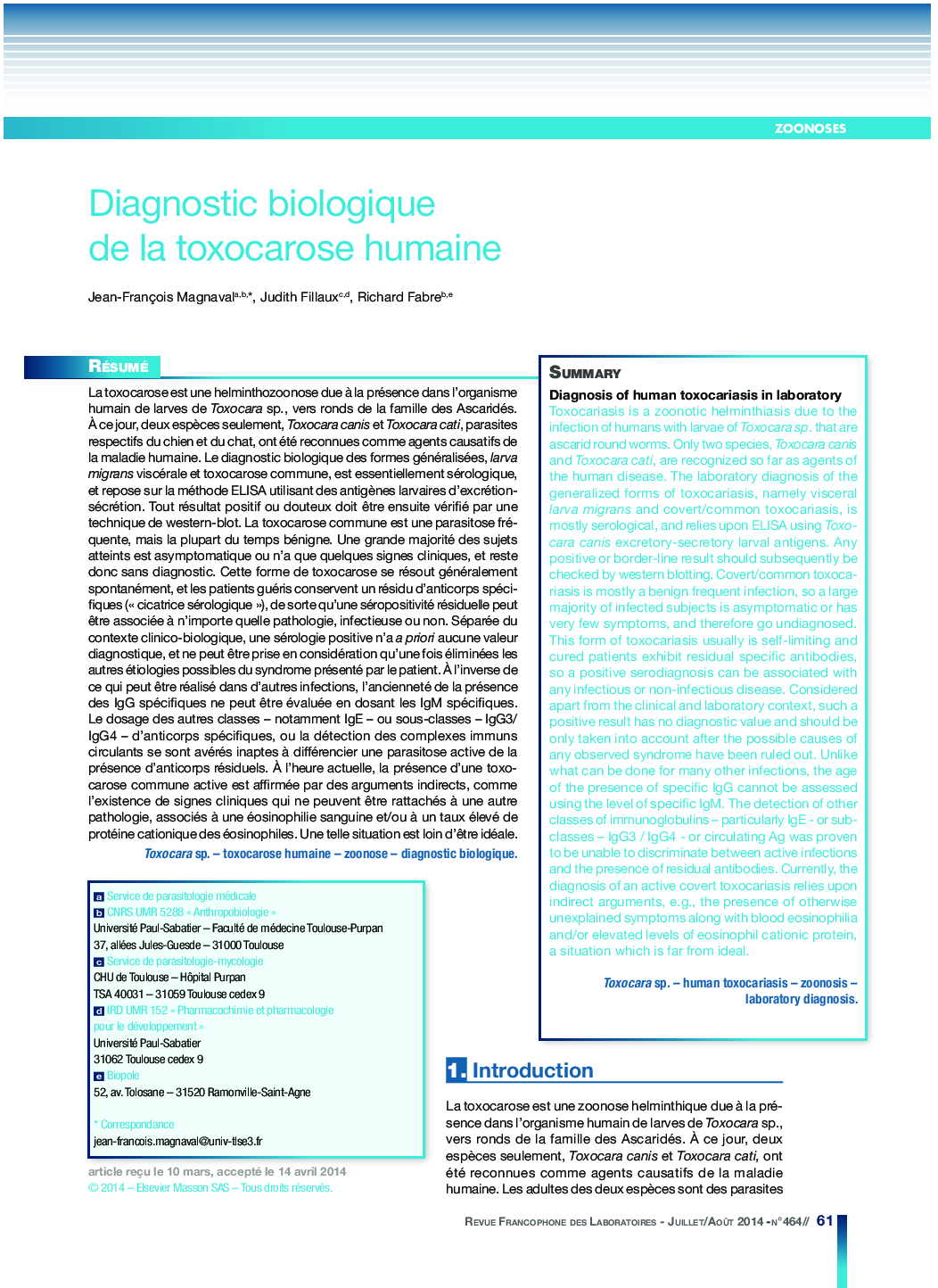| Article ID | Journal | Published Year | Pages | File Type |
|---|---|---|---|---|
| 7649029 | Revue Francophone des Laboratoires | 2014 | 9 Pages |
Abstract
Toxocariasis is a zoonotic helminthiasis due to the infection of humans with larvae of Toxocara sp. that are ascarid round worms. Only two species, Toxocara canis and Toxocara cati, are recognized so far as agents of the human disease. The laboratory diagnosis of the generalized forms of toxocariasis, namely visceral larva migrans and covert/common toxocariasis, is mostly serological, and relies upon ELISA using Toxo-cara canis excretory-secretory larval antigens. Any positive or border-line result should subsequently be checked by western blotting. Covert/common toxocariasis is mostly a benign frequent infection, so a large majority of infected subjects is asymptomatic or has very few symptoms, and therefore go undiagnosed. This form of toxocariasis usually is self-limiting and cured patients exhibit residual spécifie antibodies, so a positive serodiagnosis can be associated with any infectious or non-infectious disease. Considered apart from the clinical and laboratory context, such a positive result has no diagnostic value and should be only taken into account after the possible causes of any observed syndrome have been ruled out. Unlike what can be done for many other infections, the age of the présence of spécifie IgG cannot be assessed using the level of spécifie IgM. The détection of other classes of immunoglobulins - particularly IgE - or subclasses - IgG3 / IgG4 - or circulating Ag was proven to be unable to discriminate between active infections and the presence of residual antibodies. Currently, the diagnosis of an active covert toxocariasis relies upon indirect arguments, e.g., the presence of otherwise unexplained symptoms along with blood eosinophilia and/or elevated levels of eosinophil cationic protein, a situation which is far from ideal.
Related Topics
Physical Sciences and Engineering
Chemistry
Analytical Chemistry
Authors
Jean-François Magnaval, Judith Fillaux, Richard Fabre,
